
What Does Indigo Mean in a Dream?
Indigo, a deep and mysterious hue, often symbolizes wisdom, intuition, and a connection to the unconscious when it appears in dreams. This color bridges the seen and unseen, suggesting an invitation to explore hidden truths, psychic awareness, and deep inner knowing. Indigo is frequently associated with mystery, the night sky, and the depths of the psyche, making it a potent symbol of self-discovery and spiritual insight.
From a Jungian perspective, indigo represents the journey into the unknown, aligning with the archetype of the Wise Old Man or the Crone. It is a color of deep contemplation and introspection, often pointing to a phase of life where one must rely on inner wisdom rather than external guidance. Dreams featuring indigo may indicate an awakening of latent psychic abilities, a call to embrace one’s intuitive nature, or a confrontation with aspects of the unconscious that require integration.
In dream imagery, indigo often appears in the form of vast night skies, deep ocean waters, or ancient robes, each symbolizing the depth and expansiveness of the psyche. If indigo manifests in clothing, objects, or lighting, it may suggest a time of heightened intuition, inner vision, or an impending revelation. However, in a negative context, indigo could indicate isolation, detachment from reality, or an overwhelming fear of the unknown.
Indigo in Dreams: Symbols of Intuition, Insight, and Spiritual Vision
In the dreamscape, indigo often appears as a symbol of deep intuition, psychic perception, and access to higher realms of consciousness. When indigo colors or imagery arise in dreams, they may indicate a heightened capacity for insight, a connection to one’s inner wisdom, or a call to explore the mysteries of the soul.
Indigo dream symbols often take the form of objects or experiences that evoke a sense of depth, vastness, and transcendence, such as an indigo ocean that stretches to the horizon, an indigo night sky filled with stars, or an indigo third eye that opens to reveal hidden truths. These images suggest a movement beyond the limitations of the rational mind, a willingness to trust in the guidance of intuition and inner knowing.
Indigo in dreams may also be associated with the archetype of the Wise Old Man or Woman, the inner sage or spiritual guide that offers counsel, support, and direction on one’s life path. Dreaming of a figure cloaked in indigo robes or emanating an indigo aura may represent an encounter with this inner wisdom, a transmission of sacred knowledge or a call to embark on a journey of self-discovery and spiritual growth.
On a more personal level, indigo dreams may signify a need for greater self-reflection, introspection, and attunement to one’s authentic desires and values. Indigo can help to cut through the noise of external expectations and societal conditioning, revealing the true essence of one’s being and the unique gifts one has to offer the world.
When working with indigo dream symbols in therapeutic or personal growth contexts, it is important to approach them with an attitude of reverence, humility, and openness to the unknown. By engaging with these symbols through practices such as dream journaling, active imagination, or creative expression, individuals can deepen their relationship with their intuitive wisdom and access valuable guidance for their waking life.
Some questions to consider when exploring indigo dream symbols include: What feelings or associations arise in connection with the indigo imagery? What aspects of my life or self are calling for greater depth, reflection, or intuitive understanding? How can I cultivate a stronger connection to my inner wisdom and spiritual vision? What steps can I take to align my outer life with my deepest values and soul purpose?
Ultimately, the presence of indigo in dreams is an invitation to trust in the intelligence of the unconscious, to embrace the mystery and uncertainty of the journey, and to open oneself to the transformative power of insight and inner truth. By honoring these messages from the depths of the psyche, we can access a profound source of guidance, healing, and self-discovery.
Indigo in Emotional Transformation Therapy: Somatic Attunement and Intuitive Processing
In the practice of Emotional Transformation Therapy (ETT), indigo is often associated with the somatic experience of deep attunement, intuitive processing, and access to unconscious material. As a cool and calming color, indigo can help to soothe the nervous system, quiet the mind, and create a state of receptive awareness conducive to inner exploration and emotional healing.
On a physiological level, exposure to indigo light in ETT has been found to promote alpha and theta brain wave activity, states of consciousness associated with relaxation, meditation, and access to the subconscious mind. This shift towards a more open and receptive state can facilitate the emergence of buried memories, emotions, and insights that may be inaccessible to the rational mind.
In addition to its direct effects on the body, indigo in ETT serves as a gateway to the realm of intuition, inner vision, and psychic perception. By attuning to the subtle energies and messages of the body, individuals can access a deeper level of knowing and understanding that goes beyond the confines of linear thinking and logical analysis.
Throughout the different stages of ETT, indigo can be used to support the process of somatic attunement, helping individuals to track and explore the physical sensations, impulses, and intuitive hits that arise in response to emotional triggers or therapeutic interventions. By learning to trust and follow the wisdom of the body, individuals can uncover the root causes of their symptoms, release buried traumas, and access new possibilities for growth and transformation.
Indigo practices in ETT may involve focusing on the breath, scanning the body for areas of tension or holding, or simply resting in a state of open and curious attention. They may also include more active interventions, such as intuitive movement, authentic expression, or hands-on healing techniques that help to shift and integrate the somatic experience.
As individuals become more attuned to the presence of indigo within and around them, they may find that they are able to access a greater depth of emotional intelligence, empathy, and intuitive understanding. They may also discover a newfound sense of trust in their own inner guidance system, a capacity to navigate life’s challenges with greater clarity, confidence, and grace.
Ultimately, the somatic experience of indigo in ETT is an invitation to surrender to the wisdom of the body, to let go of the need for control and certainty, and to open oneself to the transformative power of intuitive insight and spiritual vision. By learning to listen deeply to the language of sensation and energy, we can access a profound source of healing, growth, and self-discovery that lies beyond the reach of the conscious mind.
The Neurobiology of Indigo:
To understand the psychological impact of indigo, it’s helpful to first look at how this color affects the brain on a neurobiological level. Research has shown that exposure to indigo light stimulates key brain regions and modulates neural activity in ways that enhance cognitive functions and altered states of consciousness.
One of the primary brain structures activated by indigo light is the hippocampus, a region in the medial temporal lobe essential for memory formation and retrieval. fMRI an qEEG studies have found increased hippocampal activation during indigo light exposure, especially during memory tasks (Vandewalle et al., 2010). This suggests that indigo may boost neural efficiency in memory networks, improving our ability to encode, store, and recall information.
For example, imagine you’re studying for an exam or working on a complex project. Taking study breaks under indigo lighting or using indigo backgrounds on your computer could potentially enhance your memory performance and help you integrate new knowledge more effectively. The hippocampus doesn’t work in isolation, though – it’s closely connected to regions like the amygdala (emotional processing) and frontal cortex (higher cognition), which means the memory benefits of indigo could support emotional regulation and creative problem-solving as well.
Speaking of creativity, another key finding is that indigo light increases alpha and theta brainwave activity in the prefrontal cortex (PFC), as measured by qEEG (Kawasaki & Yamaguchi, 2012). The PFC is our executive control center, involved in attention, working memory, decision making, and planning. Alpha and theta rhythms in this region are linked to relaxed alertness, innovative thinking, and integrative processing – all conducive to creative flow states and “Aha!” moments of insight.
So if you’re engaged in a creative task, whether it’s writing, designing, composing or brainstorming, surrounding yourself with indigo hues could help shift your brainwaves into a more expansive and imaginative mode. It’s like a shortcut to your inner muse! But don’t take this to mean indigo is all about detached daydreaming. The PFC is also a seat of cognitive control, so indigo may enhance your ability to direct and sustain focus, make connections between far-flung ideas, and bring your creative visions down to earth.
Another fascinating area of research is the link between indigo light, the pineal gland, and altered states of consciousness. The pineal is a small endocrine gland located deep in the brain that regulates sleep-wake cycles and produces the “darkness hormone” melatonin. It’s also rich in the neurotransmitter serotonin and the psychedelic compound DMT (Strassman, 2001). Some theories propose that the pineal may be a “third eye” that can open perception to spiritual dimensions when stimulated by certain frequencies of light, such as indigo.
While these ideas are still quite speculative, there’s no denying that many mystical traditions associate indigo with the brow chakra, inner vision, and access to higher guidance. In Jungian terms, we could say indigo activates the transcendent function – the psyche’s innate capacity to bridge the conscious and unconscious realms and facilitate individuation (the development of the Self). So next time you meditate or engage in spiritual practice, try visualizing an indigo light at your third eye and notice what insights come through.
The Psychology of Indigo:
Now that we’ve set up a neurobiological framework for understanding indigo, let’s explore how this color manifests in the psyche and what it signifies from a depth psychological perspective, especially in Jungian theory.
In color psychology, indigo is often associated with intuition, perception, and imagination. It’s the color of the inner eye, the realm of dreams, visions, and archetypes. Indigo governs the way we communicate with ourselves – the tone of our self-talk, the quality of our mental imagery, the wisdom of our inner voice. When we’re in touch with the indigo energy, we trust our gut instincts, see beyond surface appearances, and access creative solutions that seem to come out of the blue.
But like any archetype, indigo has a shadow side. An overemphasis on indigo can manifest as self-doubt, confusion, and a lack of grounding in reality. We may get so caught up in our own mental machinations that we lose touch with our bodies, our emotions, and the practical demands of life. The key is to balance the inward pull of indigo with the outward expression of its complementary color, yellow. Yellow represents logic, discernment, and communication – qualities that can help us translate our inner vision into clear insight and effective action.
In Jungian psychology, indigo can be seen as a bridge between the conscious mind (symbolized by blue) and the personal and collective unconscious (represented by violet and black). When we work with indigo in our inner journeying, we’re opening a channel between the ego and the deeper layers of the psyche, inviting the archetypes to speak to us through images, symbols, and intuitive flashes.
This process can be both illuminating and unsettling, as it often involves confronting aspects of the shadow – the repressed, denied or undeveloped parts of ourselves. Indigo shadow work may bring up themes of self-deception, escapism, or spiritual bypassing – using spiritual practices to avoid dealing with earthly challenges. But if we have the courage to face these shadows and integrate them with the light of awareness, indigo can be a powerful ally on the path of individuation.
One of the archetypes closely associated with indigo is the Wise Old Man (or Woman), the inner guru who dispenses guidance from the depths of the unconscious. This figure often appears in dreams, fantasy or active imagination as a wizard, sage, or oracle draped in indigo robes. Invoking this archetype can help us access our inner wisdom and navigate the uncharted waters of the psyche with greater clarity and confidence.
Another indigo archetype is the Mystic, the part of us that yearns for union with the divine and transcendence of the ego. The Mystic is drawn to practices like meditation, contemplative prayer, and shamanic journeying that alter consciousness and open perception to numinous realities. Indigo can be a doorway to these mystical states, but it’s important to balance these experiences with integration and embodiment. We don’t want to get lost in the astral plane and neglect our earthly responsibilities!
The Cultural Significance of Indigo:
In addition to its psychological and neurobiological dimensions, indigo has a rich history of cultural and spiritual associations that inform its symbolic meaning. By exploring how different traditions have interpreted and engaged with this color, we can deepen our understanding of its transformative power.
In many cultures, indigo is considered a sacred color associated with spiritual insight, mystical experience, and connection with the divine. In Hinduism, indigo is linked to the sixth chakra (Ajna), the center of intuition, imagination, and inner vision. It’s also associated with the god Krishna, an avatar of Vishnu who embodies divine love and the power of transcendence. In Buddhism, indigo is the color of the Buddha Vairocana, who represents the ultimate truth beyond form and conceptual understanding.
In ancient Egypt, indigo was associated with the god Amen-Ra, the creator deity who represents the hidden, unknowable aspects of the divine. The pharaohs wore indigo-dyed robes to signify their spiritual authority and connection to the mysteries of the cosmos. In medieval Europe, indigo was a rare and precious dye that was associated with wealth, nobility, and spiritual virtue. It was often used in religious art to depict the robes of the Virgin Mary, signifying her purity, wisdom, and divine grace.
In many shamanic traditions, indigo is used in healing rituals and ceremonies to induce altered states of consciousness and facilitate access to spiritual realms. The Huichol people of Mexico, for example, use indigo yarn in their sacred art and weaving to represent the “sky realm” and the journey of the soul. Similarly, in Navajo tradition, indigo is associated with the west, the place of the setting sun, and the path of inner transformation.
In modern times, indigo has been adopted by the New Age movement as a symbol of spiritual evolution and the dawning of a new era of consciousness. The concept of “indigo children” – highly sensitive, intuitive, and creative souls who are here to usher in a more enlightened age – has become popular in some spiritual circles. While this idea has been criticized by some as unscientific or even narcissistic, it speaks to the enduring power of indigo as a symbol of human potential and the quest for higher understanding.
Indigo in Art and Literature:
Indigo has also been a source of inspiration for artists, writers, and visionaries throughout history who have used this color to evoke mystery, depth, and transcendence. By examining a few examples of indigo in art and literature, we can gain insight into its expressive and symbolic power.
In her book “The Color Purple,” author Alice Walker uses shades of purple, including indigo, to symbolize the spiritual and emotional awakening of the main character, Celie. As Celie learns to stand up for herself and connect with her inner strength, she starts to see the world in a new light, noticing the beauty and vitality of the purple flowers in the fields. Here, indigo represents the blossoming of the self and the claiming of one’s authentic voice.
In the paintings of abstract expressionist Mark Rothko, indigo is often used in conjunction with other deep, saturated colors to create immersive fields of color that invite contemplation and introspection. Rothko’s indigo paintings have a meditative, numinous quality that evokes the experience of the sublime – the sense of awe and wonder in the face of something vast and ineffable. For Rothko, indigo was a doorway to the spiritual dimension of art, a way of transcending the ego and connecting with the universal.
In the film “Eternal Sunshine of the Spotless Mind,” director Michel Gondry uses indigo as a recurring visual motif to represent the bittersweet nature of memory and the process of letting go. The character Clementine, played by Kate Winslet, dyes her hair indigo as a way of expressing her quirky, free-spirited nature and her desire for reinvention. Later in the film, as the characters undergo a procedure to erase their memories of each other, the indigo color fades and disintegrates, symbolizing the impermanence of even our most cherished experiences.
In the music of jazz legend Duke Ellington, indigo is evoked as a mood and a state of mind. His classic composition “Mood Indigo” is a languid, dreamy piece that conjures up images of the night sky, the depths of the ocean, and the melancholy beauty of the human soul. Ellington’s indigo is not just a color but a feeling – a way of being in the world that is both sorrowful and sublime, introspective and expansive.
Indigo in Dreams:
As a color that bridges the conscious and unconscious minds, indigo often appears in dreams as a symbol of insight, intuition, and spiritual guidance. By paying attention to the presence of indigo in our dreams and exploring its personal associations, we can gain valuable information about our inner landscape and the messages of the soul.
Some common indigo dream motifs include:
Indigo clothing or accessories:
Dreaming of wearing or being given something indigo, such as a robe, a scarf, or a gemstone, can symbolize a call to trust your intuition, follow your inner wisdom, or embark on a spiritual journey. It may also represent the need to express your unique gifts and creativity in the world.
Indigo landscapes:
Dreaming of an indigo sky, ocean, or forest can suggest a desire for spiritual connection, inner peace, or emotional healing. These landscapes may also represent the vastness of the unconscious mind and the potential for self-discovery and transformation.
Indigo characters:
Dreaming of an indigo-colored person, animal, or creature can be a manifestation of the Wise Old Man/Woman archetype, the inner guru who offers guidance and insight. Alternatively, an indigo character may represent an aspect of your own intuitive, imaginative, or mystical nature that is seeking expression.
Indigo objects:
Dreaming of indigo-colored objects, such as a book, a painting, or a crystal, can symbolize the presence of esoteric knowledge, creative inspiration, or spiritual power. These objects may be keys to unlocking your inner potential and accessing higher states of consciousness.
Of course, the meaning of indigo in dreams is always personal and contextual. It’s important to consider your own associations with this color, as well as the overall tone and narrative of the dream. Indigo in a nightmare or an anxiety dream, for example, may have a different connotation than indigo in a peaceful, transcendent dream.
One approach to working with indigo dreams is to use active imagination, a technique developed by Jung that involves dialoguing with dream images and symbols in a meditative state. By engaging with the indigo elements of your dreams in this way, you can gain deeper insight into their messages and integrate their wisdom into your waking life.
Indigo in Healing and Personal Growth:
Given its effects on the brain and its rich symbolic associations, indigo can be a powerful tool for personal transformation, emotional healing, and spiritual growth. Here are some ways to work with indigo energy in your own life:
Meditation and visualization:
Incorporate indigo into your meditation practice by visualizing an indigo light surrounding you or emanating from your third eye. Imagine this light purifying your mind, opening your intuition, and connecting you with your inner wisdom. You can also work with indigo in your chakra meditations, focusing on the sixth chakra (Ajna) to balance and activate your inner vision.
Color therapy:
Surround yourself with indigo hues in your living and working spaces to create an atmosphere of calm, creativity, and inspiration. Wear indigo clothing or accessories, especially when you need to access your intuition or solve complex problems. You can also use indigo-colored lights, crystals, or essential oils in your self-care rituals to promote relaxation, insight, and spiritual well-being.
Art and journaling:
Use indigo in your creative pursuits, whether it’s painting, drawing, writing, or crafting. Allow yourself to be guided by your intuition and inner vision, and notice what themes and insights emerge. Keep an indigo dream journal to record and reflect on your nighttime journeys, and use active imagination to engage with the indigo symbols and characters that appear.
Nature immersion:
Spend time in natural settings that evoke the energy of indigo, such as the night sky, the deep ocean, or the shaded understory of a forest. Allow yourself to be awed by the vastness and mystery of the cosmos, and feel your connection to something greater than yourself. You can also work with indigo plants and flowers, such as indigo dye, blue lotus, or purple passionflower, in your herbal and magical practices.
Shadow work and self-discovery:
Use indigo as a lens for exploring your unconscious mind and integrating your shadow aspects. When challenging emotions, patterns or symptoms arise, imagine them bathed in an indigo light of awareness and compassion. Ask your inner wisdom for guidance on how to heal and transform these parts of yourself, and trust the insights that come. Remember that indigo is a color of depth, complexity, and nuance – it invites us to embrace the full spectrum of our being, light and dark alike.
From its neurobiological effects on memory, creativity, and consciousness to its archetypal resonances with wisdom, intuition, and spirituality, indigo is a color of profound depth and transformative power. By exploring the many facets of indigo – its symbolism, its cultural history, its artistic expressions, and its healing applications – we can tap into a rich vein of knowledge and inspiration for our personal and collective journey of growth.
As we navigate the challenges and opportunities of the modern world, indigo reminds us to trust our inner guidance, to seek wisdom from the depths, and to embrace the mystery and beauty of the cosmos. It invites us to bridge the realms of matter and spirit, to integrate the conscious and unconscious dimensions of our being, and to express our unique gifts and visions in service of a more awakened, compassionate world.
So the next time you find yourself drawn to the enigmatic allure of indigo, know that you are being called to a path of deep insight, soulful creativity, and spiritual transformation. Trust the journey, and let the wisdom of indigo guide you home.
Color Psychology






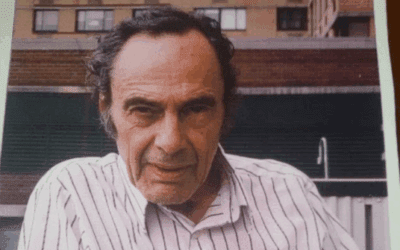
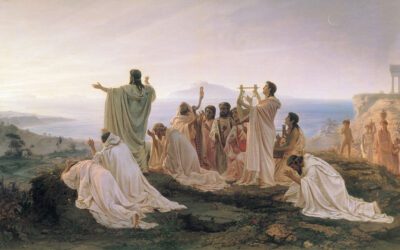

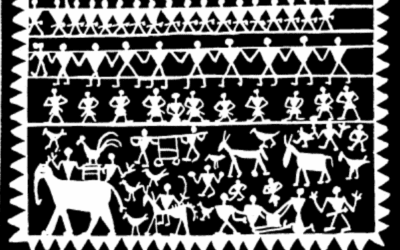

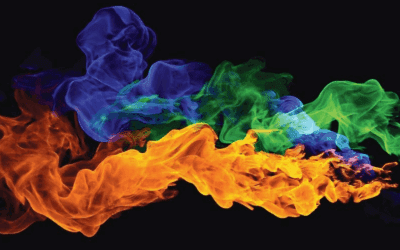

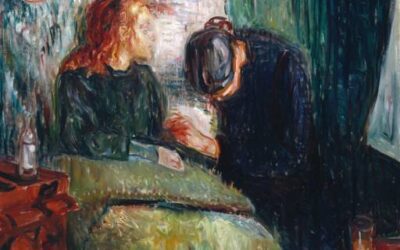
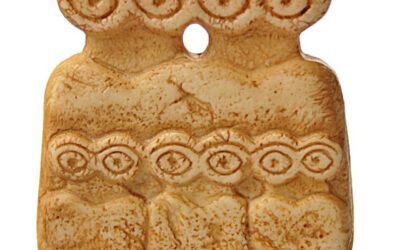


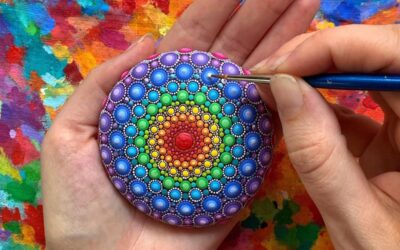


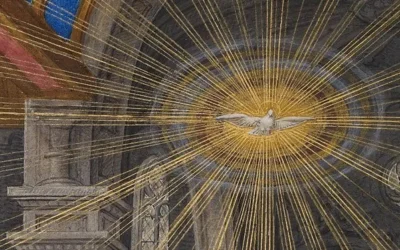





0 Comments